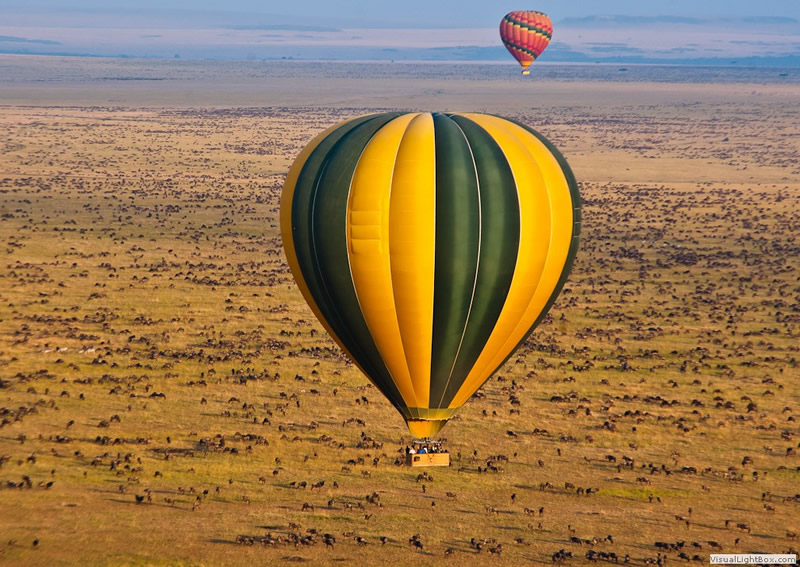Hot Air Balloons stand 10 storeys tall and are made by Cameron Balloons of Bristol, England. The balloons last about 400 flying hours in the fierce African sun, which means they must be replaced every 2 years.
They are twice the size of Double Eagle II, the balloon the Americans used to successfully cross the Atlantic in August 1978.

BALLOON SPECIFICATIONS
The larger of our balloons, the Cameron A315, stands as high as a ten storey building, measures 100 feet across at it’s equator and has a volume of 315,000 cubic feet ( 9000 cubic metres). The A315 is among the largest operational balloons in the world. At sea level it has a lift capability of over two tons ( 2000kgs), although in Africa they carry only a maximum of 12 passengers and the pilot.
The balloon ‘envelope’ is made of a nylon based fabric superior to that of a spinnaker sail. The basket is made of woven cane and willow by expert craftsmen in the Royal Workshops for the Blind in Bristol. The design has not been surpassed in over a hundred years of balloon flight as there are few other materials that combine strength with resilience for so little weight.
FLIGHT
CONTROLS
The balloon’s lift comes from hot air which is slightly lighter than the surrounding cold atmosphere. The hotter the balloon the faster it rises. As the balloon cools it slowly descends. The pilot can control the balloon to brush the grass or the tops of trees, yet could if he wished, go as high as 15,000 feet. However, our flying is kept more down to earth.
We do not fly the balloons in winds greater than 15 mph (30kph) so the calm African mornings are the perfect time for our flights. The balloons must go where the winds take them but, as winds at varying heights often have varying directions, the pilot can choose his height and hence his direction.
One of the SAFEST forms of flight
The gentle and silent nature of the balloon flight allows the passengers to view the big five: the lion, leopard, elephant, rhino and buffalo from a comfortable distance. One of the many fun activities in Kenya.
FUEL &
PROPULSION
The balloon is “powered” by ordinary cooking gas to heat the air in the envelope. The fuel system is duplicated in every respect to prevent failure of the burner. If all power should be lost however,( something which has, in fact, never happened) the balloon would enter a stable cold descent with the envelope acting as a parachute. This feature of the balloon makes it one of the safest forms of flight.
BALLOON
PILOTS
To pilot a balloon, it is necessary to gain a pilot’s license exactly as with other forms of aircraft. There are a set number of hours of instruction and the same theoretical exams to pass as any fixed wing pilot. Also like their fixed wing counterparts, balloon pilots keep logs books, carry out pre-flight checks and monitor the weather conditions for safe flying. In addition, all Balloon Safaris pilots have undergone extensive professional training and worked as commercial balloon pilots around the world.

